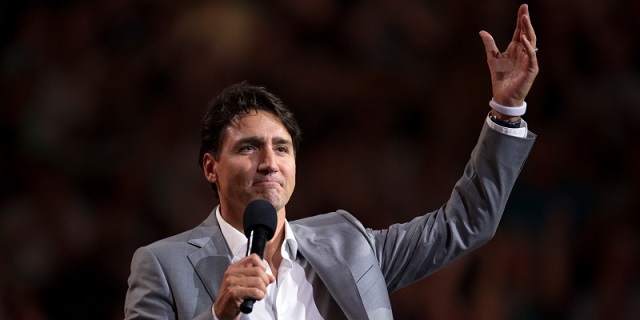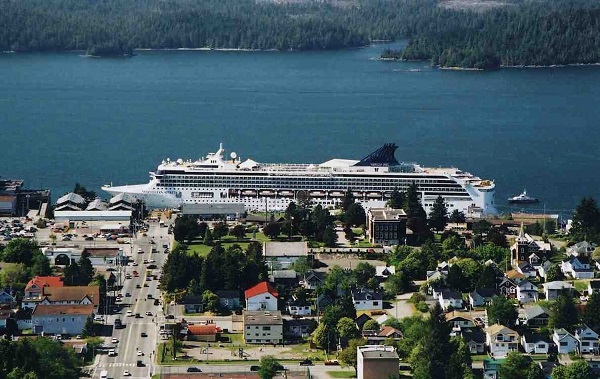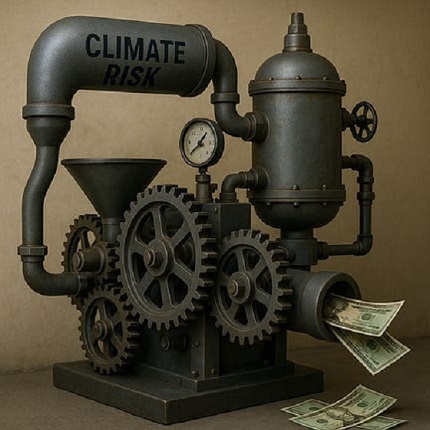Business
Trans Mountain pipeline’s soaring cost provides more proof of government failure

From the Fraser Institute
By Julio Mejía and Elmira Aliakbari
To recap, since the Trudeau government purchased the project from Kinder Morgan for $4.5 billion in 2018, the cost of the Trans Mountain expansion has ballooned (in nominal terms) to $34 billion.
According to the latest calculations, the Trans Mountain pipeline expansion project, which the Trudeau government purchased from Kinder Morgan in 2018, will cost $3.1 billion more than the $30.9 billion projected last May, bringing the total cost to about $34 billion—more than six times the original estimate.
This is yet another setback for a project facing rising costs and delays. To understand how we arrived at this point, let’s trace the project’s history.
In 2013, Kinder Morgan applied to the National Energy Board (NEB) to essentially twin the existing pipeline built in 1953, which runs for 1,150 kilometres between Strathcona County, Alberta and Burnaby, British Columbia, with the goal to have oil flow through the expansion by December 2019.
In 2016, after three years of deliberations, the NEB approved the pipeline, subject to 157 conditions. By that time, according to Kinder Morgan, costs had risen by $2 billion, bringing the total cost to $7.4 billion.
And yet, despite Kinder Morgan following the legal and regulatory process to get the necessary approvals, the B.C. NDP and Green Party vowed to “immediately employ every tool available” to stop the project. At the same time, the Trudeau government was planning regulations that would increase the cost and uncertainty of infrastructure projects across the country.
Faced with mounting uncertainty and potential setbacks, Kinder Morgan planned to withdraw from the project in 2018. In response, the Trudeau government intervened, nationalizing the project by purchasing it from Kinder Morgan with taxpayer dollars for $4.5 billion. Once under government control, costs skyrocketed to $12.6 billion by 2020 and $21.4 billion by 2022 reportedly due to project safety requirements, financing costs, permitting costs, and crucially, more agreements with Indigenous communities. One year later, in 2023, the Trudeau government said the cost has risen to $30.9 billion.
To recap, since the Trudeau government purchased the project from Kinder Morgan for $4.5 billion in 2018, the cost of the Trans Mountain expansion has ballooned (in nominal terms) to $34 billion.
Surprised? You shouldn’t be.
When government attempts to build infrastructure projects, it often incurs cost overruns and delays due to a lack of incentives to build in an efficient and resourceful way. According to a study by Bent Flyvbjerg, an expert in this field, a staggering 90 per cent of 258 public transportation projects (in 20 countries) exceeded their budgets. The reason behind this phenomenon is clear—unlike private enterprises, government officials can shift cost overruns onto the public without bearing any personal financial consequences.
And the Trudeau government continues to make a bad situation even worse by introducing uncertainty and erecting barriers to private-sector investment in vital infrastructure projects including pipelines. Federal Bill C-69, for instance, overhauled the entire environmental assessment process and imposed complex and subjective review requirements on major energy projects, casting doubt on the viability of future endeavours.
What’s the solution to this mess?
Clearly, if policymakers want to help develop Canada’s natural resource potential—and the jobs, economic opportunity and government revenue that comes with it—they must enact regulatory reform and incentivize private investment. Rather than assuming the role of construction companies, governments should create an environment conducive to private-sector participation, thereby mitigating risk to taxpayers.
By implementing reasonable and competitive regulations that enhance investment incentives, policymakers—including in the Trudeau government—can encourage the private sector to build large-scale infrastructure projects that benefit the Canadian economy.
Authors:
Business
Inflation Reduction Act, Green New Deal Causing America’s Energy Crisis


From the Daily Caller News Foundation
By Greg Blackie
Our country is facing an energy crisis. No, not because of new demand from data centers or AI. Instead, it’s because utilities in nearly every state, due to government imposed “renewable” mandates, self-imposed mandates, and the supercharging of the Green New Scam under the so-called “Inflation Reduction Act,” have been shutting down vital coal resources and building out almost exclusively intermittent and costly resources like solar, wind, and battery storage.
President Donald Trump understands this, and that is why on day one of his administration he declared an Energy Emergency. Then, a few months later, the President signed a trio of Executive Orders designed to keep our “beautiful, clean coal” burning and providing the reliable, baseload, and affordable electricity Americans have benefitted from for generations.
Those orders have been used to keep coal generation online that was slated to shut down in Michigan and will potentially keep two units operating that were scheduled to shut down in Colorado this December. In Arizona, however, the Cholla Power Plant in Navajo County was shuttered by the utility just weeks after Trump explicitly called out the plant for saving in a press conference.
Dear Readers:
As a nonprofit, we are dependent on the generosity of our readers.
Please consider making a small donation of any amount here.
Thank you!
Unlike states with green mandates, Arizona essentially has none. Instead, our utilities, like many around the country, have self-imposed commitments to go “Net Zero” by 2050. To meet that target, they have planned to shut down all coal generation in the state by 2032 and plan to build out almost exclusively solar, wind, and battery storage to meet an expected explosive growth in demand, at a cost of tens of billions of dollars. So it is no surprise that like much of the rest of the country, Arizona is facing an energy crisis.
Taking a look at our largest regulated utilities (APS, TEP, and UNS) and the largest nonprofit utility, SRP, future plans paint an alarming picture. Combined, over the next 15 years, these utilities expect to see demand increase from 19,200 MW to 28,000 MW. For reference, 1,000 MW of electricity is enough to power roughly 250,000 homes. To meet that growth in demand, however, Arizonans will only get a net increase of 989 MW of reliable generation (coal, natural gas, and nuclear) compared to 22,543 MW (or nearly 23 times as much) of intermittent solar, wind, and battery storage.
But what about all of the new natural gas coming into the state? The vast majority of it will be eaten up just to replace existing coal resources, not to bring additional affordable energy to the grid. For example, the SRP board recently voted to approve the conversion of their Springerville coal plant to natural gas by 2030, which follows an earlier vote to convert another of their coal plants, Coronado, to natural gas by 2029. This coal conversion trap leaves ratepayers with the same amount of energy as before, eating up new natural gas capacity, without the benefit of more electricity.
So, while the Arizona utilities plan to collectively build an additional 4,538 MW of natural gas capacity over the next 15 years, at the same time they will be removing -3,549 MW (all of what is left on the grid today) of coal. And there are no plans for more nuclear capacity anytime soon. Instead, to meet their voluntary climate commitments, utilities plan to saddle ratepayers with the cost and resultant blackouts of the green new scam.
It’s no surprise then that Arizona’s largest regulated utilities, APS and TEP, are seeking double digit rate hikes next year. It’s not just Arizona. Excel customers in Colorado (with a 100% clean energy commitment) and in Minnesota (also with a 100% clean energy commitment) are facing nearly double-digit rate hikes. The day before Thanksgiving, PPL customers in Rhode Island (with a state mandate of 100% renewable by 2033) found out they may see rate hikes next year. Dominion (who has a Net Zero by 2050 commitment) wanted to raise rates for customers in Virginia by 15%. Just last month, regulators approved a 9% increase. Importantly, these rate increases are to recover costs for expenses incurred years ago, meaning they are clearly to cover the costs of the energy “transition” supercharged under the Biden administration, not from increased demand from data centers and AI.
It’s the same story around the country. Electricity rates are rising. Reliability is crumbling. We know the cause. For generations, we’ve been able to provide reliable energy at an affordable cost. The only variable that has changed has been what we are choosing to build. Then, it was reliable, dispatchable power. Now, it is intermittent sources that we know cost more, and that we know cause blackouts, all to meet absurd goals of going 100% renewable – something that no utility, state, or country has been able to achieve. And we know the result when they try.
This crisis can be avoided. Trump has laid out the plan to unleash American Energy. Now, it’s time for utilities to drop their costly green new scam commitments and go back to building reliable and affordable power that generations to come will benefit from.
Greg Blackie, Deputy Director of Policy at the Arizona Free Enterprise Club. Greg graduated summa cum laude from Arizona State University with a B.S. in Political Science in 2019. He served as a policy intern with the Republican caucus at the Arizona House of Representatives and covered Arizona political campaigns for America Rising during the 2020 election cycle.
Business
Fuelled by federalism—America’s economically freest states come out on top

From the Fraser Institute
Do economic rivalries between Texas and California or New York and Florida feel like yet another sign that America has become hopelessly divided? There’s a bright side to their disagreements, and a new ranking of economic freedom across the states helps explain why.
As a popular bumper sticker among economists proclaims: “I heart federalism (for the natural experiments).” In a federal system, states have wide latitude to set priorities and to choose their own strategies to achieve them. It’s messy, but informative.
New York and California, along with other states like New Mexico, have long pursued a government-centric approach to economic policy. They tax a lot. They spend a lot. Their governments employ a large fraction of the workforce and set a high minimum wage.
They aren’t socialist by any means; most property is still in private hands. Consumers, workers and businesses still make most of their own decisions. But these states control more resources than other states do through taxes and regulation, so their governments play a larger role in economic life.
At the other end of the spectrum, New Hampshire, Tennessee, Florida and South Dakota allow citizens to make more of their own economic choices, keep more of their own money, and set more of their own terms of trade and work.
They aren’t free-market utopias; they impose plenty of regulatory burdens. But they are economically freer than other states.
These two groups have, in other words, been experimenting with different approaches to economic policy. Does one approach lead to higher incomes or faster growth? Greater economic equality or more upward mobility? What about other aspects of a good society like tolerance, generosity, or life satisfaction?
For two decades now, we’ve had a handy tool to assess these questions: The Fraser Institute’s annual “Economic Freedom of North America” index uses 10 variables in three broad areas—government spending, taxation, and labor regulation—to assess the degree of economic freedom in each of the 50 states and the territory of Puerto Rico, as well as in Canadian provinces and Mexican states.
It’s an objective measurement that allows economists to take stock of federalism’s natural experiments. Independent scholars have done just that, having now conducted over 250 studies using the index. With careful statistical analyses that control for the important differences among states—possibly confounding factors such as geography, climate, and historical development—the vast majority of these studies associate greater economic freedom with greater prosperity.
In fact, freedom’s payoffs are astounding.
States with high and increasing levels of economic freedom tend to see higher incomes, more entrepreneurial activity and more net in-migration. Their people tend to experience greater income mobility, and more income growth at both the top and bottom of the income distribution. They have less poverty, less homelessness and lower levels of food insecurity. People there even seem to be more philanthropic, more tolerant and more satisfied with their lives.
New Hampshire, Tennessee, and South Dakota topped the latest edition of the report while Puerto Rico, New Mexico, and New York rounded out the bottom. New Mexico displaced New York as the least economically free state in the union for the first time in 20 years, but it had always been near the bottom.
The bigger stories are the major movers. The last 10 years’ worth of available data show South Carolina, Ohio, Wisconsin, Idaho, Iowa and Utah moving up at least 10 places. Arizona, Virginia, Nebraska, and Maryland have all slid down 10 spots.
Over that same decade, those states that were among the freest 25 per cent on average saw their populations grow nearly 18 times faster than those in the bottom 25 per cent. Statewide personal income grew nine times as fast.
Economic freedom isn’t a panacea. Nor is it the only thing that matters. Geography, culture, and even luck can influence a state’s prosperity. But while policymakers can’t move mountains or rewrite cultures, they can look at the data, heed the lessons of our federalist experiment, and permit their citizens more economic freedom.
-

 Alberta2 days ago
Alberta2 days agoThe Recall Trap: 21 Alberta MLA’s face recall petitions
-

 illegal immigration2 days ago
illegal immigration2 days agoUS Notes 2.5 million illegals out and counting
-

 International2 days ago
International2 days agoTyler Robinson shows no remorse in first court appearance for Kirk assassination
-

 Energy2 days ago
Energy2 days agoCanada’s future prosperity runs through the northwest coast
-

 Daily Caller1 day ago
Daily Caller1 day ago‘There Will Be Very Serious Retaliation’: Two American Servicemen, Interpreter Killed In Syrian Attack
-

 Business20 hours ago
Business20 hours agoInflation Reduction Act, Green New Deal Causing America’s Energy Crisis
-

 Crime13 hours ago
Crime13 hours agoTerror in Australia: 12 killed after gunmen open fire on Hanukkah celebration
-

 Media12 hours ago
Media12 hours agoReporters determined to drive their industry and its reputation into the abyss one Tweet at a time











